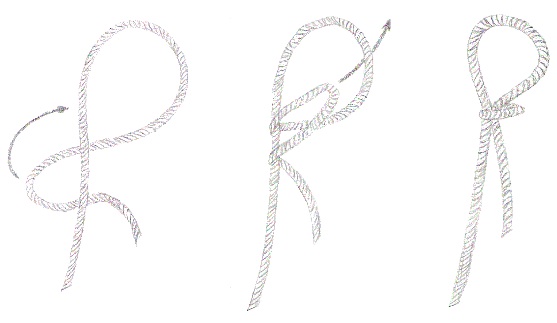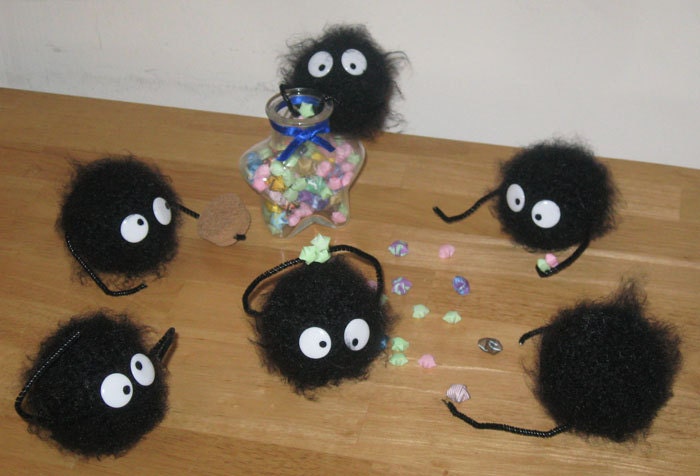As with any new hobby though, you’ll want to have a firm grasp of the basics before leaping straight into things. So, before we start talking about how to crochet your own adorable little plushies, I have one important question for you.
Do you have any experience crocheting?
If you do, great, you’re already ahead of the game! Even if that first scarf you tried to make seemed to magically grow and shrink in width, that’s okay. This at least means you’re familiar with some of the basic things like how to hold your crochet hook, and some basic terminology.
If this is your first attempt to crochet, that’s fine too! It’s a rewarding hobby that lets you make anything from gloves and dresses, to cute little stuffed dolls and you’re never too old or set in your ways to learn a new skill.
Now, you could fall into a third group with this question where not only are familiar with crochet, you excel at it and are just looking to learn a new venue to expand in. It’s good to have you on board as well, and I only ask that you give the following a read thru to make sure you are familiar with all the techniques and skills required to make crochet plushies (also known as Amigurumi).
-----------------------------------------------------------------------------------------------------------------------
Getting Started: The Basics of Crochet
Similar to knitting, crocheting is a type of weaving where a single needle (crochet hook) is used to turn spun yarn into things such as clothing and blankets. Varying the needle size or thickness of the yarn being the main two factors into how large your piece will become. The easiest way to see an example of this difference is to compare something like a sock, to an afghan. The sock has a tight weave to help keep your foot covered, while using a thin yarn so as to allow your foot to still fit in your shoe. Where as the afghan is often made with thick yarn and has a much looser weave; both qualities allowing for air to be trapped in for warmth while also giving the blanket a soft over sized feel to it.
Since the overall goal of this guide will have us making things with a tight weave, I recommend making sure you have a size G-6 (4.25mm) or smaller. Personally, I prefer the size E-4 (3.5mm). The only hooks I will not recommend are the ones with the interchangeable head sizes as I don’t trust them, but other then that just pick crochet hooks made from whatever material you or your budget feel more comfortable with using.
Now that you have a hook, let’s get some yarn! While I can’t speak for how it is in countries outside of the US, most yarn makers in the states use the same weight system for how to measure their yarn thickness; with numbers ranging from 1 (Super Fine) up to 6 (Super Bulky). Super Fine yarn is commonly used for things like socks and babies, and Super Bulky for Blankets and Afghans.
For making Amigurumi, we want to use something about middle of the road weight/thickness wise so I recommend using yarn with a weight of 4 (Medium). This type of yarn is commonly called worsted weight and is one of the more commonly available thicknesses that you’ll find in the store. Some fairly popular brands that I often use that carry yarn in this weight are Red Heart, Loops & Threads, Vanna’s Choice, and Lion Brand - but don’t feel you have to limit yourself to them. If the yarn is the right weight and has a nice feel to it, feel free to use that one instead.
Okay, so we’ve got our yarn and our crochet hook, we’re ready to start some practice squares. Why practice squares and what are they?

(Image from knit-a-square.com)
Well, they’re just what they sound like. Little squares that you’ve made to practice a certain crochet weaving technique – referred to as a stitch – and to make sure you are keeping a consistent tension with your work so that your work comes out nice and even looking. Admittedly, tension can be fudged somewhat when making Amigurumi as you can adjust the size elsewhere to compensate, but that can get you into advanced techniques so it’s best just to make sure your work is nice and consistent from the start.
So to start our squares, we’re going to make a slip knot. Your slip knot can be made over your hook or separately and then putting the hook through the loop after. I prefer to do the former, but to each their own. The end result is to have your crochet hook through the loop of your slip knot.

Image of a slip knot being made over the hook.

Image of making a slip knot separately.
The beginning of 90% of all crochet patterns start with making a base chain that you build all of your rows on top of. Since many people out there have relayed how to do this much better than I, I instead refer you to the follow few sites and videos for how to get started with making your chain.
Lion Brand Yarn Learning Center, The Knit Witch on Youtube, Crochet for Dummies (Has images from a left handed perspective, but does not show how to hold the yarn)
Once you've practice making that chain a few times and become familiar with it, I think 15 is a good number for a practice square so you'll want to chain (ch) 16. That's not a typo, you do want to go one more. This is because that first chain will count as a stitch, and also serves to bring you up to the proper height. Now it's time to start our first row of stitches. The most common stitch used in Amigurumi making is the single crochet (sc) so that's what I want you to become familiar with first. Just like above with how to make a chain, here are some quick links on how to make a single crochet.
Lion Brand Yarn Learning Center, Expert Village on Youtube, Crochet for Dummies (again, picked for the use of left handed images)
When you reach the end of your row, just chain (ch) once and flip your piece over to magically have your row going the right way again! For your practice square, I want you to just make several rows (Approx. 12-18 depending on the thickness of the yarn you chose) of just single crochet (sc). Make sure you count as you do each stitch to make sure you're not skipping over (dropping) and of them or adding any on accident. Continue doing this until you feel comfortable with the stitch.
As you're working on these, you'll also notice that factor of tension I mentioned before popping up. The best tension is one where your hook can slide easily into the loop of your stitch and your hands are not tense. This is something that just comes with practice practice practice, but will certainly save you from cursing at your work later when that last row was done so tightly that you now have to fight the yarn just to push that stupid piece of metal through
Why yes, yes I do speak from experience on this, how ever did you know?
Make as many squares or rows as you need until you can get a decent consistency with your stitches. If you want to save your yarn and use it for an actual finished project, just pull on the string still connected to your ball of yarn and you sill slowly pull out all of your hard earned work. If you want to keep what you've done as a reminder of what things should look like, make sure you're at the end of a row and cut your string off from the main ball, leaving a few inches of yarn (tail) left over to pull all the way through that last loop on you hook.
------------------------------------------------------------------------------------------------------
Abbreviations and Reading Patterns
As with almost any hobby/craft, there are abbreviations used to keep patterns or instructions from becoming bogged down with too many words and therefore hard to read. I started by slowly introducing them in parenthesis in the above section, but here is a quick list of the commonly used abbreviations found in Amigurumi patterns:
sts - stitches
ch - chain
sc - single crochet
slst - slip stitch
dc - double crochet
hdc - half double crochet
tog - together
inc - increase (an increase of one stitch is always assumed unless otherwise stated)
# sc in next sc - Another way of saying increase where the number of stitches is specified
dec - decrease (a decrease of one is always assumed unless otherwise stated)
sc#tog - another way of saying decrease where the number of stitches is specified
rep - repeat
Row# - The number of the row you are currently working on
Rnd# - The number of the round you are currently (used instead of Row when you're working in a circle)
Knowing that those are the abbreviations, see if you can read the lines of instructions here:
Row 1: Sl st in 2nd ch from hook, hdc in next ch, *sl st in next ch, hdc in next ch; rep from * across – 34 sts at end of this row.
Highlight to show answer: Slip stitch in 2nd chain from the hook, half double crochet in next chain,* slip stitch in next chain, half double crochet in next chain; repeat from * for the rest of the row - You should have 34 stitches at the end of this row
Rnd 3: *2 sc in next sc, sc in next sc; rep from * around - 18 sc total at the end of this rnd.
Highlight to show answer:* 2 single crochet in the next single crochet; repeat this instruction from the * for the rest of the round - You should have 18 single crochet stitches at the end of the round
Reading patterns can take some getting used to so don't feel bad if you need to re-write the pattern with all the abbreviations fleshed out until you can get used to reading them. It can also help some people to use a plastic marker so that they can easily see where the end of a row or round is, and also so that they don't have to count as they work/finish a row or round.




